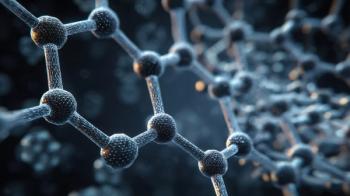News|Articles|June 25, 2025
New Study Investigates the Hypoglycemic Effects of Peony Flower Polyphenols Using Gut Microbiota and Metabolomics
Author(s)John Chasse
Fact checked by: Caroline Hroncich
Can the peony, a plant having a long history of consumption and medicinal value in China, play a role in the treatment of type 2 diabetes mellitus? Researchers using liquid chromatography-tandem mass spectrometry (LC-MS/MS) and high-performance liquid chromatography (HPLC) set out to find the answer.
Advertisement
Key Points
- Peony polyphenols (PP) significantly lowered fasting blood glucose and improved insulin sensitivity in a type 2 diabetes mellitus (T2DM) mouse model induced by a high-fat diet and streptozotocin, while also improving oxidative stress markers and liver/kidney function.
- Mechanistic studies using 16S rRNA sequencing and liquid chromatography-tandem mass spectrometry (LC-MS/MS)-based metabolomics showed that PP modulates gut microbiota composition and amino acid metabolism pathways, suggesting a gut–metabolism link in its hypoglycemic action.
- The study establishes a scientific foundation for using PP as a potential functional food to manage T2DM, though further research is needed to clarify its multi-target mechanisms through methods like fecal transplantation.
Researchers affiliated with Henan Napu Biotechnology Company, the Henan Institute of Business Science, the Henan Academy of Sciences, and Henan Agricultural University (all located in Zhengzhou, China) established a type 2 diabetes mellitus (T2DM) mouse model using a high-fat diet (HFD) combined with streptozotocin (STZ) to determine the effects of peony flowers polyphenols (PP) on the fasting blood glucose (FBG), serum insulin, glucose tolerance, serum biochemical indicators, liver oxidation indicators, and intestinal short-chain fatty acids (SCFAs) of those mice. To explore the mechanism of PP in lowering blood glucose, the changes of intestinal flora in mouse cecum contents were analyzed using 16SrRNA sequencing, and serum metabolomics was detected using liquid chromatography-tandem mass spectrometry (LC-MS/MS). A paper based on their work was published in Frontiers in Nutrition (1).
Diabetes mellitus (DM) remains a major public health challenge, posing serious risks to human health following tumors, cardiovascular, and cerebrovascular diseases. Furthermore, both its incidence and mortality rates are rapidly increasing globally (2). The number of patients with diabetes is projected to reach 783 million by 2045, with type 2 diabetes mellitus (T2DM), a complex endocrine, metabolic disease characterized by elevated blood glucose and abnormal blood lipid levels, accounting for nearly 90% of all reported cases (3,4). Failure to manage one’s diabetes may lead to serious long-term complications, including chronic kidney disease, retinopathy, cardiovascular disease, and neuropathy, thereby increasing the mortality rate (5,6).
The peony, often referred to as the “King of Flowers,” boasts abundant resources and has a consumption and medicinal history in China of more than a thousand years. The flower is rich in polyphenols, flavonoids, polysaccharides, and other components, as well as antibacterial, antioxidant, anti-photoaging, anti-aging, α-glucosidase and α-amylase inhibitor activities (7–11). While the researcher’s previous work revealed that peony flowers polyphenols have inhibitory effects on α-glucosidase activity (12), they state that there have been no relevant reports on the hypoglycemic effect and mechanism of action of PP (1).
The researchers extracted and isolated PP from peony flowers (Paeonia ostii “Fengdan”), and its total polyphenol content (TPC) was verified by the Folin-Ciocalteu method and the contents of 17 components in PP were uncovered through analysis involving high-performance liquid chromatography (HPLC). The HFD/STZ combination was then used to establish the T2DM mouse model, and the hypoglycemic effect and mechanism of PP based on gut microbiota and metabolomics were investigated (1).
Analysis revealed that the TPC in PP was 81.13 ± 2.89%, and that, after eight weeks of intragastric administration, PP significantly reduced the fasting blood glucose (FBG), serum insulin level, and insulin resistance index, improved impaired glucose tolerance, and regulated serum liver and kidney function related indicators. In addition, it significantly increased superoxide dismutase (SOD) and glutathione peroxidase (GSH-PX) levels, significantly decreased malondialdehyde (MDA) level in the liver, and increased the contents of short-chain fatty acids (SCFAs) in the gut of T2DM mice. Non-targeted metabolomics results revealed that the high-dose group of PP (PPH) can reverse the metabolic disorders of metabolite markers induced by T2DM in vivo (1).
The researchers state that PP may play a hypoglycemic role by regulating intestinal flora and amino acid metabolism pathway, and that their work establishes a foundation for using PP as a functional food to prevent or alleviate type 2 diabetes mellitus. However, due to the hypoglycemic mechanism of PP involving multiple components and targets, they add that further verification and research through fecal transplantation and other techniques is needed (1).
References
- Chen, L.; Wang, X.; Ning, E. et al. Hypoglycemic Effect of Peony Flowers Polyphenols Based on Gut Microbiota and Metabolomics. Front. Nutr. 2025, 12, 1573865. DOI:
10.3389/fnut.2025.157386 - Alvarez-Silva, C.; Kashani, A.; Hansen, T. H. et al. Trans-Ethnic Gut Microbiota Signatures of Type 2 Diabetes in Denmark and India. Genome Med. 2021,13 (1), 37. DOI:
10.1186/s13073-021-00856-4 - Ahmad, E.; Lim, S.; Lamptey, R. et al. Type 2 Diabetes. The Lancet 2022, 400 (10365), 1803-1820. DOI:
10.1016/S0140-6736(22)01655-5 - Ogurtsova, K.; Guariguata, L.; Barengo, N. C. et al. IDF Diabetes Atlas: Global Estimates of Undiagnosed Diabetes in Adults for 2021. Diabetes Res. Clin. Pract. 2022, 183, 109118. DOI:
10.1016/j.diabres.2021.109118 - Zhang, L.; Liu, Y.; Ke, Y. et al. Antidiabetic Activity of Polysaccharides from Suillellus luridus in Streptozotocin-Induced Diabetic Mice. Int. J. Biol. Macromol. 2018, 119, 134-140. DOI:
10.1016/j.ijbiomac.2018.07.109 - Yao, Y.; Zhao, X.; Xin, J. et al. Wu Y, Li H. Coumarins Improved Type 2 Diabetes Induced by High-Fat Diet and Streptozotocin in Mice via Antioxidation. Can. J. Physiol. Pharmacol. 2018, 96 (8), 765-771. DOI:
10.1139/cjpp-2017-0612 - Ma, L.; Jiao, K.; Luo, L. et al. Characterization and Macrophage Immunomodulatory Activity of Two Polysaccharides from the Fowers of Paeonia suffruticosa Andr. Int. J. Biol. Macromol. 2019, 124, 955-962. DOI:
10.1016/j.ijbiomac.2018.12.035 - Li, C.; Jiang, C.; Jing, H. et al. Separation of Phenolics from Peony Flowers and Their Inhibitory Activities and Action Mechanism on Bacterial Biofilm. Appl. Microbiol. Biotechnol. 2020, 104 (10), 4321-4332. DOI:
10.1007/s00253-020-10540-z - He, J.; Dong, Y.; Liu, X,. et al. Comparison of Chemical Compositions, Antioxidant, and Anti-Photoaging Activities of Paeonia suffruticosa Flowers at Different Flowering Stages. Antioxidants 2019, 8 (9), 345. DOI:
10.3390/antiox8090345 - Wang, S.; Xue, J.; Zhang, S. et al. Composition of Peony Petal Fatty Acids and Flavonoids and Their Effect on Caenorhabditis elegans Lifespan. Plant Physiol. Biochem. 2020, 155, 1-12. DOI:
10.1016/j.plaphy.2020.06.029 - Duan, X. Y. Study on Extraction Purification and Physiological Activity of Water Soluble Polysaccharide from Peonies; Henan University of Science and Technology, 2023.
- Chen, L.; Wang, X. F.; Li, Z. N. et al. Composition of Free and Bound Phenolics from Paeonia suffruticosa Andr. Flowers and Their Antioxidant and α-glucosidase Inhibitory Activities. Food Sci. 2025, 46, 83–89. DOI:
10.7506/spkx1002-6630-20240408-054
Newsletter
Join the global community of analytical scientists who trust LCGC for insights on the latest techniques, trends, and expert solutions in chromatography.
Advertisement
Advertisement
Advertisement
Trending on LCGC International
1
Translating Scientific Skills Into Impact: Careers Beyond Research and Academia
2
Advancing Cannabinoid Profiling with UHPLC-MS Chromatography
3
Saying Goodbye to LCGC International
4
Green Stabilizers in Nitrocellulose Propellants: VOC Fingerprinting of Accelerated Aging by HS-SPME–GC×GC–TOF-MS
5





